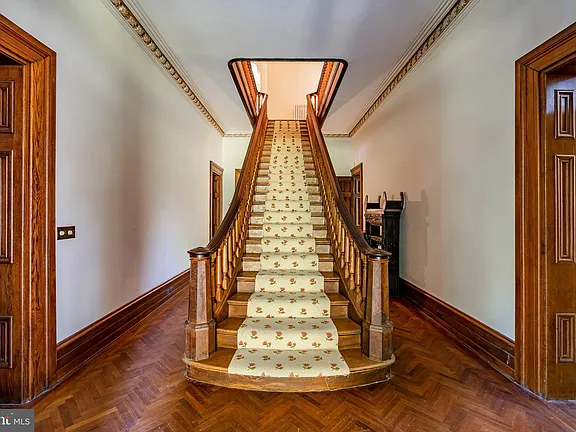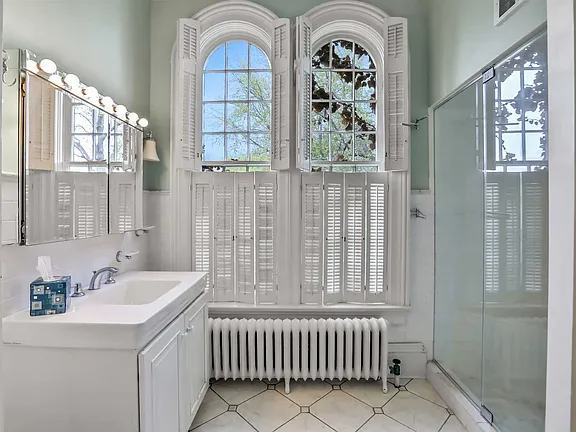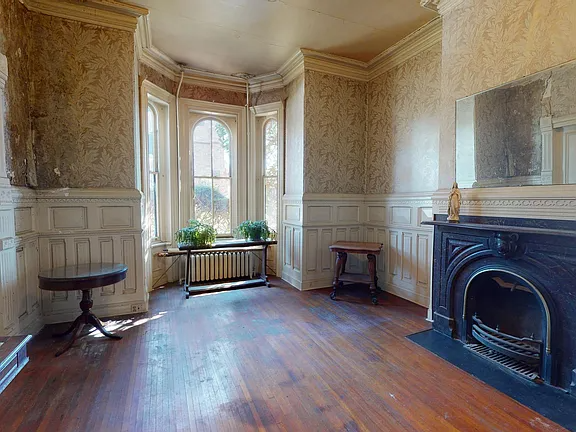1825-1860
Greek Revival
America's Homage to Antiquity
The style’s popularity soared with the rise of educational institutions that offered architectural training and the increasing availability of pattern books containing Greek Revival designs. These resources, combined with the expansion of railways that facilitated transport of diverse building materials, allowed even remote settlements to construct buildings in this noble style.
The Greek Revival style became an emblem of American idealism and intellectualism, symbolizing the democratic principles of ancient Greece that the young nation held in high regard. Interestingly, Greek Revival architecture in America exhibited considerable versatility, being modified according to regional preferences and available materials. For example, in areas abundant in marble and granite, like Vermont and Massachusetts, Greek Revival structures were often made of these enduring materials, presenting a distinctive aesthetic compared to the brick and wood constructions found elsewhere.
While urban Greek Revival buildings were commonly compact and symmetrical to fit smaller city lots, the style was also adapted for extensive country estates, often showcasing grand colonnades and porticoes. The Greek Revival’s versatility allowed it to seep into a wide range of contexts, significantly contributing to its lasting impression on American architecture.
The style’s popularity soared with the rise of educational institutions that offered architectural training and the increasing availability of pattern books containing Greek Revival designs. These resources, combined with the expansion of railways that facilitated transport of diverse building materials, allowed even remote settlements to construct buildings in this noble style.
The Greek Revival style became an emblem of American idealism and intellectualism, symbolizing the democratic principles of ancient Greece that the young nation held in high regard. Interestingly, Greek Revival architecture in America exhibited considerable versatility, being modified according to regional preferences and available materials. For example, in areas abundant in marble and granite, like Vermont and Massachusetts, Greek Revival structures were often made of these enduring materials, presenting a distinctive aesthetic compared to the brick and wood constructions found elsewhere.
While urban Greek Revival buildings were commonly compact and symmetrical to fit smaller city lots, the style was also adapted for extensive country estates, often showcasing grand colonnades and porticoes. The Greek Revival’s versatility allowed it to seep into a wide range of contexts, significantly contributing to its lasting impression on American architecture. The architectural principles of Greek Revival homes were a reflection of America’s newfound national identity.
Following the War of 1812, the United States was keen to distance itself from British architectural styles, which led to the popularity of the Greek Revival style. This style was seen as an embodiment of democratic ideals, aligning the young republic with ancient democratic Greece rather than imperial Britain. In the South, Greek Revival architecture was particularly favored due to its grandeur and elegance, with plantation homes often designed in this style. The large columns and symmetrical design lent themselves well to these expansive properties, creating an imposing and stately presence.
Greek Revival was not just limited to the wealthy, however, with simpler and more subdued versions of the style being adopted for smaller, more modest homes. The enduring appeal of Greek Revival is a testament to its adaptability and the timeless allure of its classical aesthetics.
Historic Elegance at Your Fingertips: Plan a stay in a beautiful home.


What about the interior?
On entering a Greek Revival house, one is often struck by the lofty ceilings, designed to cultivate an atmosphere of spaciousness and invite an abundance of natural light through tall, grandiose windows.
The interior of these homes reflects a clear dedication to artisanal skill, with decorative moldings, cornices, and architraves enhancing the classical aesthetic. Notably, fireplaces frequently stand as artful centerpieces in the living areas, their designs often borrowing from ancient Greek ornamentation.
Continuing the classical theme, hardwood floors – commonly adorned with artisanal rugs – add warmth and richness to the interior. There is also a substantial use of stone and plaster, evoking the marble finishes found in ancient Greek architecture.
These homes also highlight the Greek custom of hospitality, featuring generous kitchens and dining rooms designed for convivial gatherings. Each Greek Revival home is touched by a distinct sense of place, as the tradition of using locally-sourced materials is respected, perfectly blending heritage with locale in its design.
